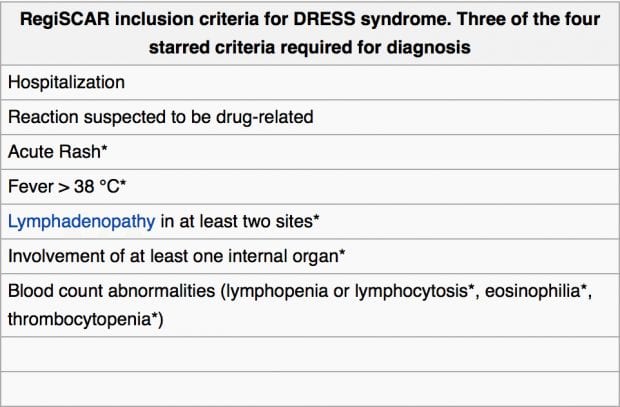Funtabulously Frivolous Friday Five 125
Just when you thought your brain could unwind on a Friday, you realise that it would rather be challenged with some good old fashioned medical trivia FFFF, introducing the Funtabulously Frivolous Friday Five 125
Question 1
How often does acute angioedema occur as a complication of IV thrombolysis for acute stroke? In which patients is it most common? Which part of the body is typically affected?
Reveal the funtabulous answer
Angioedema occurs in 1.3% – 5% of cases.
Patients taking ACE-inhibitors are predisposed.
It often involves the orolingual region ipsilateral to the side of hemiparesis
- Fugate JE, Kalimullah EA, Wijdicks EF. Angioedema after tPA: what neurointensivists should know. Neurocrit Care. 2012 Jun;16(3):440-3.
Question 2
Which syndrome is characterized by a rash, fever, lymphadenopathy, characteristic haematologic abnormalities such as eosinophilia, thrombocytopenia, atypical lymphocytosis and visceral organ involvement presenting within 8 weeks of initiation of, typically, anti-convulsant therapy? Which two anti-convulsants are usually the cause?
Reveal the funtabulous answer
Question 3
What is the “kindling” effect?
Reveal the funtabulous answer
It typically occurs in patients in alcohol withdrawal.
Kindling refers to the phenomenon of increasingly severe withdrawal symptoms, including an increased risk of seizures, due to repeated withdrawals from alcohol or other sedative-hypnotics.
The hypothesis is that repeated withdrawals from GABAergic acting sedative-hypnotic drugs or alcohol causes acute GABA-underactivity as well as glutamate overactivity which can lead to sensitisation and hyper-excitability of the CNS.
Question 4
Chvostek sign is considered to be evidence of neuromuscular hyperexcitability, and is seen as a sign of hypocalcaemia. Why is this clinical sign essentially worthless?
Reveal the funtabulous answer
25% of healthy individuals (43% between the ages of 20 and 29 years) have a positive Chvostek sign.
29% of patients with hypocalcemia do not.
- Méneret A, Guey S, Degos B. Chvostek sign, frequently found in healthy subjects, is not a useful clinical sign. Neurology. 2013 Mar 12;80(11):1067
Question 5
What is the significance of Blue Scrotum Sign of Bryant?
Reveal the funtabulous answer
Unilateral scrotal ecchymosis
Results from blood tracking along the retroperitoneum and into the inguinal canal; it occurs in the setting of retroperitoneal bleeding and should raise concern for the possibility of a ruptured AAA or lacerated viscus (the case above was a lacerated liver due to a difficult delivery).

- John Henry Bryant and Bryant sign (1903)
- Thomas Stephen Cullen and Cullen sign (1918)
- George Grey Turner and Grey Turner sign (1919)
- Francis Edward Stabler and Stabler Sign (1934)
- John Adrian Fox and Fox sign (1966)

FFFF
Funtabulously Frivolous Friday Five
Dr Neil Long BMBS FACEM FRCEM FRCPC. Emergency Physician at Kelowna hospital, British Columbia. Loves the misery of alpine climbing and working in austere environments (namely tertiary trauma centres). Supporter of FOAMed, lifelong education and trying to find that elusive peak performance.

